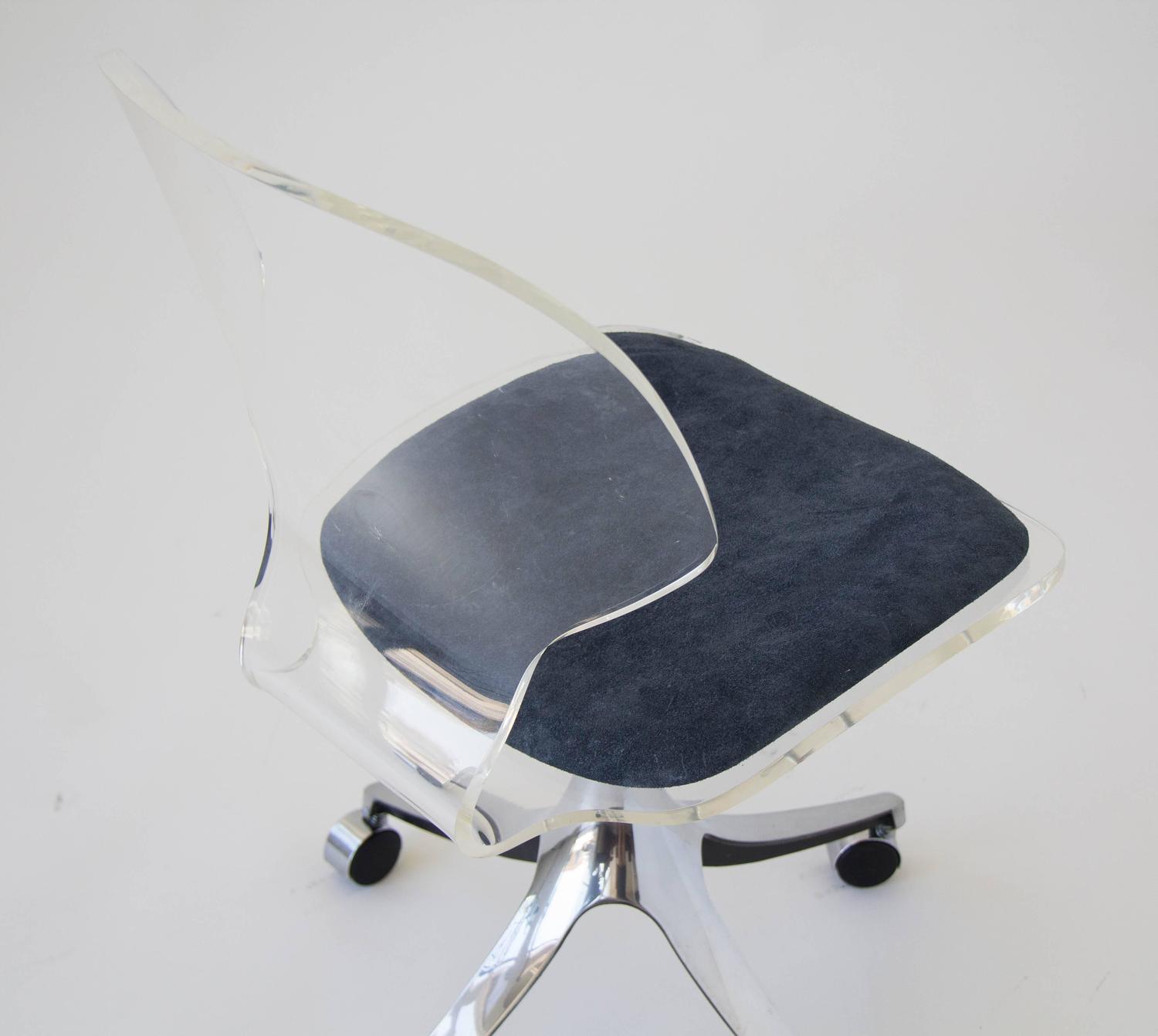Lucite Rolling Desk Chair


Lucite rolling desk chairs offer a modern and sleek aesthetic, but their functionality and ergonomic properties are crucial considerations for potential buyers. The transparent design, while visually appealing, presents unique challenges in ensuring user comfort and long-term health. This analysis examines the ergonomic features, material durability, and maintenance requirements of these increasingly popular chairs.
Ergonomic Design Considerations for Lucite Chairs
The transparency of lucite necessitates careful consideration of ergonomic design to ensure user comfort and support. A lack of inherent structural rigidity in lucite compared to materials like wood or metal means that ergonomic features must be carefully integrated to provide adequate support and prevent discomfort. Crucially, lumbar support is paramount; without it, prolonged sitting can lead to back pain and postural issues. Adjustable height is equally important, allowing users to customize the chair to their individual needs and maintain proper posture. Finally, even weight distribution is key to preventing pressure points and promoting even support across the seating surface. Designers often incorporate features like contoured seating and strategically placed padding (often using comfortable, breathable materials) to address these issues.
Durability and Maintenance Comparison of Chair Materials
The durability and maintenance requirements of lucite chairs differ significantly from those made of metal or wood. A comparison highlights the trade-offs involved in choosing a lucite chair.
The following table summarizes the pros and cons of each material:
| Material | Pros | Cons |
|---|---|---|
| Lucite | Modern aesthetic, lightweight, easy to clean (with proper care) | Less durable than metal or wood, susceptible to scratches, can become brittle over time, may not offer as much structural support. |
| Metal | Durable, strong, provides excellent support, often adjustable | Can be heavy, may rust or corrode, can feel cold, less aesthetically versatile. |
| Wood | Aesthetically pleasing, durable (with proper care), can be comfortable | Can be heavy, susceptible to damage from moisture, requires more maintenance than metal or lucite. |
Cleaning and Maintaining a Lucite Rolling Desk Chair
Proper cleaning and maintenance are crucial for preserving the appearance and longevity of a lucite rolling desk chair. Neglect can lead to scratches, dulling, and potential structural damage. The following steps Artikel a recommended cleaning and maintenance procedure:
- Dust Regularly: Use a soft, dry microfiber cloth to regularly remove dust and debris. Avoid abrasive cloths or materials that could scratch the lucite surface.
- Clean with a Gentle Solution: For more thorough cleaning, mix a small amount of mild dish soap with warm water. Apply the solution to a soft cloth and gently wipe the chair, rinsing the cloth frequently. Avoid using harsh chemicals or abrasive cleaners.
- Dry Thoroughly: After cleaning, dry the chair completely with a clean, dry microfiber cloth. Residual moisture can leave streaks or damage the lucite over time.
- Address Scratches Promptly: Minor scratches can often be buffed out with a specialized lucite polish or a very fine polishing compound. Follow the product instructions carefully.
- Protect from Extreme Temperatures: Avoid exposing the chair to extreme temperatures or direct sunlight, as this can cause warping or discoloration.
- Lubricate Moving Parts: Regularly lubricate the rolling mechanism with a silicone-based lubricant to ensure smooth and quiet operation. This will also extend the life of the chair’s moving parts.
Lucite Rolling Desk Chair


The lucite rolling desk chair, a seemingly simple piece of furniture, occupies a unique niche in the market, appealing to a specific demographic with its blend of modern aesthetics and practical functionality. Its transparent design offers a sense of lightness and openness, while its rolling base provides essential mobility for today’s dynamic workspaces.
Target Market and Purchasing Motivations
The appeal of a lucite rolling desk chair extends across various demographics, driven by a combination of professional needs, lifestyle choices, and aesthetic preferences. The following table categorizes potential customer segments and their primary motivations for purchase:
| Demographic | Age Range | Profession | Purchasing Motivation |
|---|---|---|---|
| Young Professionals | 25-35 | Tech, Design, Media | Modern aesthetic, stylish workspace, mobility |
| Established Professionals | 35-55 | Executive, Creative Industries | Ergonomics, high-quality materials, statement piece |
| Home Office Workers | 30-60+ | Various | Comfort, functionality, space-saving design |
| Design-Conscious Consumers | 20-50+ | Various | Unique design, visual appeal, enhances interior decor |
Current Design and Manufacturing Trends
The lucite rolling desk chair market is experiencing several key trends. Manufacturers are increasingly incorporating sustainable materials, such as recycled acrylic, in response to growing environmental concerns. Technological integration is also emerging, with some chairs featuring built-in features like adjustable height settings controlled via smartphone apps. Innovative designs are exploring variations in transparency, incorporating colored or frosted acrylic to offer diverse aesthetic options. Furthermore, there’s a push towards enhanced ergonomics, with designs focusing on improved lumbar support and adjustability to cater to diverse body types.
Analysis of a Lucite Rolling Desk Chair Article
[Assuming the “Insert Article Text Here” placeholder contained an article focusing on the popularity of lucite chairs amongst young professionals in tech companies, highlighting their sleek design and the chairs’ role in creating a modern and stylish workspace.]
The recent surge in popularity of lucite rolling desk chairs, particularly within the tech sector, reflects a broader trend towards modern and minimalist office aesthetics. Young professionals, often working in open-plan offices, find the transparent design both visually appealing and conducive to a collaborative environment. The chair’s inherent mobility caters to the dynamic nature of many tech jobs, allowing for easy movement between workspaces. The sleek, contemporary design complements the overall office aesthetic, contributing to a professional and stylish work environment. This preference highlights the increasing importance of workplace design in attracting and retaining talent, where aesthetics play a significant role alongside functionality and ergonomics.
